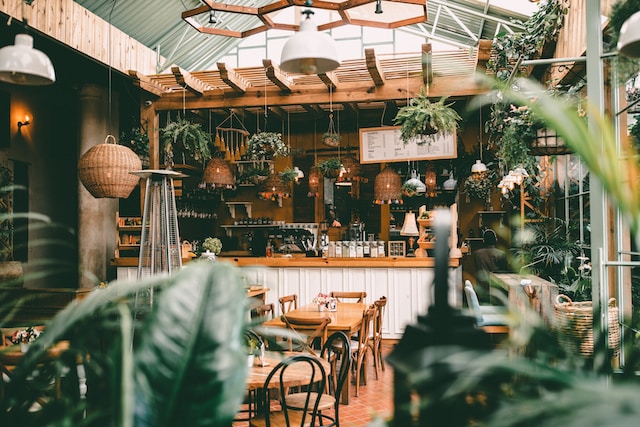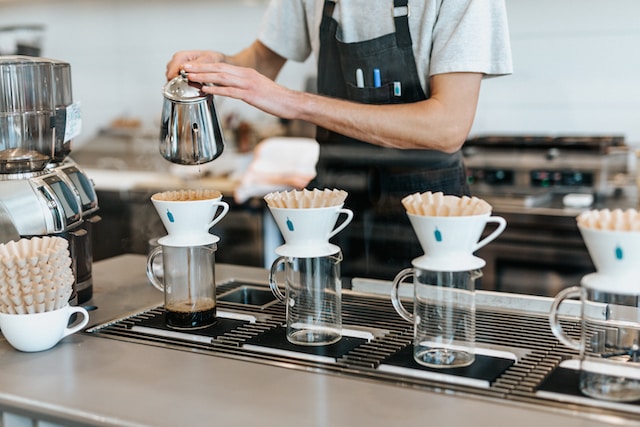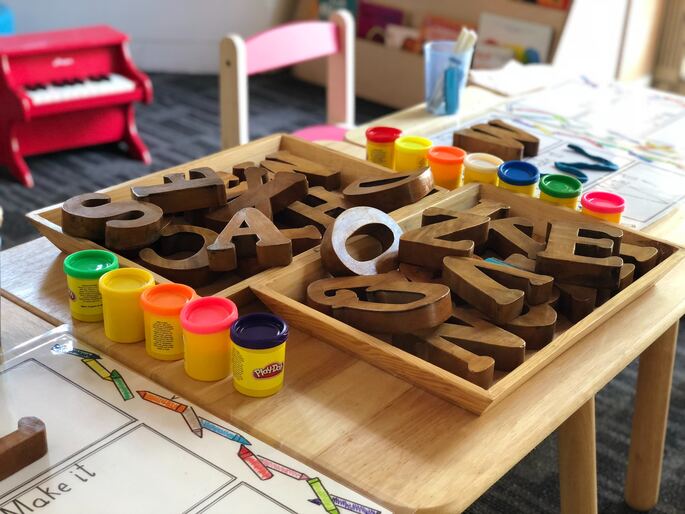If you absolutely love coffee, you probably want to share your passion for this popular drink with others. Opening your very own coffee shop at home is a great way to start a new business, get to know the people in your community, and discover new ways to make and enjoy this delicious beverage. There are many benefits to opening a coffee shop, including the chance to make money doing something you love, learning more about coffee, and the chance to unleash your creativity. This guide has tips, tricks, and information about the benefits of opening your coffee shop at home, how to design and modify your space, and how to renovate your kitchen to create the ultimate shopping experience. You’ll learn how to plan the shop, the essential kitchen appliances you’ll need to be successful, and much more.
Planning your home coffee shop
Before you open your home for business, you’ll need to do some advanced planning to ensure everything will work as intended. Here are some things to keep in mind as you’re in the initial planning stages.
- Assess the feasibility of your current space and determine how much room you have now versus how much you’ll need. You might have to do some renovations and make some changes to your home to accommodate your patrons and the kitchen equipment, cash registers, and other areas.
- Always start your business by setting a budget and looking at all of the financial considerations. This includes the price of brewing equipment, marketing and advertising, and startup costs. You may need a business loan or borrow money from family and friends to start your business. Don’t forget to factor in common ongoing costs like paying your employees, buying cups and ingredients, equipment maintenance, and electricity.
- Look at who your target customers are and what their preferences are in terms of coffee flavors, types of coffee beverages (iced versus hot), and the general demographics. Identifying a niche or target market now will ensure success when it’s time to open your business. The initial stage is also a great time to start planning your menu. Maybe your target market loves flavored coffee, or perhaps they prefer classics like espresso and lattes.
- Make sure you research the local permit requirements and the business regulations for your specific jurisdiction. Most localities require a business license and a food handler license at minimum. Check with your local chamber of commerce or city or state licensing boards to ensure you’re applying for the permits and licenses you need.
- Plan your tableware and disposable food packaging options meticulously. Choose the right paper coffee cups, along with other plates, bowls, and utensils that align with your coffee shop’s aesthetic and sustainability goals. Opt for eco-friendly and visually appealing options to enhance the overall customer experience. Properly selected packaging also impacts the takeaway aspect of your business, ensuring your customers can enjoy their coffee and treats conveniently.
Design a welcoming space for customers

Most people equate coffee shops with cozy, comfortable spaces to relax, chat with friends, or study. When you plan your coffee shop at home, ensuring it’s a welcoming space for your customers is important.
- Create a cozy and inviting ambiance: Use comfortable couches and chairs, add soft area rugs, and layer lighting to help you create a cozy vibe for customers. Soft colors and textiles help you design an inviting space in which people will enjoy spending time.
- Choose the right furniture and décor: Add coffee-themed artwork to your walls and decorate with a cohesive motif so your shop has an identity. Choose comfortable furniture that looks great and that’s also easy to clean. You’ll inevitably deal with the occasional spill, so select furniture with upholstery you can wipe clean or try removable covers that you can wash to keep everything in good condition. Try to choose specific pieces of décor that you really love without adding too much, or else the coffee shop will start to feel cluttered.
- Incorporate comfy seating arrangements: Design your coffee shop’s layout in a way that encourages customers to interact with each other. You can add a couch and some chairs and arrange them around a coffee table in the center. If you think you’ll have customers coming into the shop to study or work, set up a separate area with tables and chairs where people can sip their coffee alone as they focus on their work.
- Maximize natural lighting and install the appropriate light fixtures: Bring in as much natural light as possible through windows so that the shop feels cozy and inviting. You can also layer lighting by adding the right light fixtures, including some floor and table lamps. Overhead lighting should be minimal and not too bright so that you’re designing a warm, comfortable space that doesn’t feel jarring or overwhelming.
- Personalize the space: Develop a business name and logo during the planning phase. Use this to personalize your coffee shop at home. Add the logo to napkins, cups, and wall signage. You can also make the space even more personal by hanging some family photos on the wall or bringing in some sentimental pieces of home décor that have meaning to you.
- Choose quality materials: When transforming your home into a coffee shop, choose materials that balance durability, aesthetics, and maintenance. Opt for durable flooring like tile or hardwood that can withstand heavy foot traffic. For countertops and tables, you can go for materials like lightweight marble, granite, and laminate that are easy to clean and maintain.
Setting up your coffee shop station
If you want your new coffee shop business to run smoothly, you’ll need to make sure you’re setting up the coffee station in a way that works for you based on what you sell, how much space you have, and how much volume you do. Start by selecting the appropriate brewing equipment to make serving a variety of beverages to customers as easy as possible. This equipment should include an espresso maker, a drip coffee maker, a blender, and coffee grinders. You’ll also need to set up a separate area for flavored syrups and other ingredients like milk, cream, and sprinkles.
It’s important to invest in high-quality coffee beans and other supplies. Consider a monthly coffee subscription to ensure a steady supply of fresh, premium coffee delivered right to your doorstep. Customers who really love coffee can easily tell the difference between low and high-quality coffee. Make sure you’re choosing beans from a reputable, reliable source and that they’re affordable and delicious. Partner with roasters and businesses selling coffee in bulk so you can get a discount and promote their products. You might even end up in a great partnership that helps your business grow over time.
When you set up your coffee station, you should design an efficient workflow that makes coffee preparation easy. Place the equipment near the sink so that it’s easy to refill reservoirs and rinse dishes quickly. The right workflow will lead to better and faster service for your employees and customers. The layout of your coffee station will mean the difference between a productive business and a frustrating one. Go over several options and workflow designs until you decide which will be best for your business model and the products you sell.
Keeping your ingredients stored properly will help to keep everything fresh and prevent spoilage—store products in an industrial refrigerator to keep them at an optimum temperature. For smaller batches, store coffee beans in airtight containers so they stay fresh all day. Organize your accessories and ingredients so they’re easy to find and reach whenever needed. Use clear labels to make it easy to find what you need in a pinch.
Starting a coffee shop also means you’ll want to explore various brewing methods and techniques. Take some classes or research online to discover new, creative methods to brew, mix, store, and serve your products to customers. Learning these techniques can also help you and your team maximize production.
Essential kitchen appliances for a home coffee shop

Your coffee shop is only as good as the appliances and equipment you use. Here are some essential kitchen appliances to invest in for a successful home coffee shop.
- Coffee machines: Look for coffee machines and espresso makers that allow you to produce these beverages at a high volume. Industrial coffee machines can brew much more rapidly than standard home coffee machines. Investigate different brands and sizes as well as price ranges so you choose the type of coffee machines you need to make the type of drinks you want to sell.
- Coffee grinder: A high-quality coffee shop should serve freshly ground beans. Look for a reliable, heavy-duty coffee grinder that can grind a large amount of beans at once. If you plan to sell freshly ground coffee beans by the bagful, you may want to invest in two or more grinders, so you have one for the drinks and one for the actual coffee that customers can purchase and take with them to brew at home.
- Additional appliances: Making coffee is about more than just brewing. Don’t forget to invest in an industrial blender so you can make blended beverages and ingredients. A milk frother is also a must-have for any coffee shop. This handheld appliance makes it easy to turn milk or cream into a delicious, frothy topper or addition to various coffee beverage blends.
- Water filtration system: If your water doesn’t taste fresh and clean, it will come through in your coffee. Make sure you invest in a dedicated water filtration system that will keep your water as clean and filtered as possible. Even if you don’t have “hard water,” you’d be surprised at just how much difference filtered water can make.
- Storage: Make sure you store your coffee beans and ingredients properly to keep them fresh. Refrigerate whole beans until you plan to use them so they stay fresher for longer. Store some beans in airtight containers so they don’t get spoiled. Exposure to air and sunlight can make coffee beans go bad, turn rancid, or change their flavor over time.
- Get a home warranty: The appliances and equipment you purchase can be expensive, so it’s important that you protect your investment. Consider paying for a home warranty that will cover the cost of repairs or replacement of anything that breaks. This warranty will also cover the major systems in your home/coffee shop, like the electrical and plumbing. Even if you have home insurance, a whole home warranty is well worth the cost to cover you in case of an emergency.
Crafting a coffee shop menu and beverage offerings
One way to help your coffee shop stand out is to create your own custom menu and special beverage offerings. Here are some tips to help you create a unique drink menu that will help you stand out from the competition.
- Experiment: Play around with some different coffee recipes and flavor profiles. The more you experiment, the more unique drinks you’re likely to come up with that you can add to the menu. Ask some of your friends and family members to test a few of your creations and provide their feedback. It’s a great way to gain insight into which creations will appeal to customers and which ones you might need to adjust or remove from the menu altogether.
- Incorporate specialty drinks and seasonal offerings: You’re not just limited to serving coffee at your new shop. Add a few specialty drinks like teas and cold beverages that customers can try. Remember, not everyone likes coffee, and branching out with different types of drinks ensures everyone will find something they like. Provide seasonal offerings to entice customers, like peppermint or gingerbread flavors at Christmas and marshmallows during Easter and springtime.
- Offer alternatives: Some customers may have specific dietary restrictions, so it’s important to make sure that you’re offering an assortment of dairy and sweetener alternatives. Include things like soy and almond milk for those who prefer dairy-free drinks. Healthier sugar alternatives like Splenda and other non-sugar sweeteners will help you expand your customer base and give people an option other than straight milk or sugar if they prefer something else.
- Plan a curated food menu: In addition to your drinks, develop a creatively curated food menu that complements your beverages. This can be an assortment of baked goods like cupcakes, muffins, and breakfast pastries. Consider adding light food like fresh deli sandwiches or breakfast biscuits so people have something to eat with their drinks. You don’t have to go overboard, but a simple food menu is a great way to get people to come through the door and return.
- Highlight your signature creations: If you want to be successful, it’s important to ensure that your customers know your signature creations and your brand’s unique selling points. Seasonal marketing and social media are two great ways to reach customers and bring them through the door. Focus on what makes your coffee shop unique, and remember to include seasonal menu items, special drinks, and other perks that will entice people to try out your business.
Promoting and marketing your home coffee shop

Now that you’re ready to open your doors, it’s time to think about how to promote and market your home coffee shop. Start by leveraging social media platforms like Facebook, Instagram, Pinterest, and TikTok to help you build an online presence. Create an account for your coffee shop on each social media platform, then post as often as possible. Engage with customers, host contests, and answer questions on your social media pages and accounts to build trust and interest in your shop.
When you own a small business, engaging with the local community and fellow coffee enthusiasts is important. Look for fellow coffee fans and aficionados who will appreciate what you have to offer and tell others about it, too. Consider hosting some local coffee-tasting events or offering fun pop-up experiences near you. Offer people some free samples so they know what your products taste like.
One of the best and most effective ways to market any business is by partnering with other local businesses and organizations. Talk to local bakeries who might be interested in supplying your shop with baked goods. Ask local coffee growers and roasters if they want to sell their products in your shop. Talk to organizations like the Chamber of Commerce and other small business groups to find out how you can network, attend trade shows, and reach out to prospective partners.
Perhaps most importantly, you should encourage your customers to market your shop through word-of-mouth advertising. If they’ve had an exceptional customer service experience, encourage them to spread the word. Create an email list and use it to market your business to others. You can also include a customer survey to get an idea about how well you’re doing and areas where you might need to improve. Word of mouth is one of the best ways to advertise, and it doesn’t cost you a thing.
Consider hiring a business coach to provide guidance and support as you navigate the challenges and opportunities of running a home coffee shop. The right business coach can offer personalized strategies, insights, and advice tailored to your specific needs and goals. They can help you develop effective marketing strategies, refine your business plan, and enhance your leadership and management skills. With the support of a business coach, you can gain confidence, clarity, and direction as you build and grow your coffee shop venture.
Remember these tips to help you start a successful home coffee shop. With the right equipment, menu, shop design, marketing, and a sprinkle of creativity, you can meaningfully share your love for coffee with others. Don’t be afraid to embark on the journey of creating an amazing coffee shop experience at home. Come up with a menu filled with delicious drinks and food you’re proud of so that you can share your passion with the coffee-loving community.




